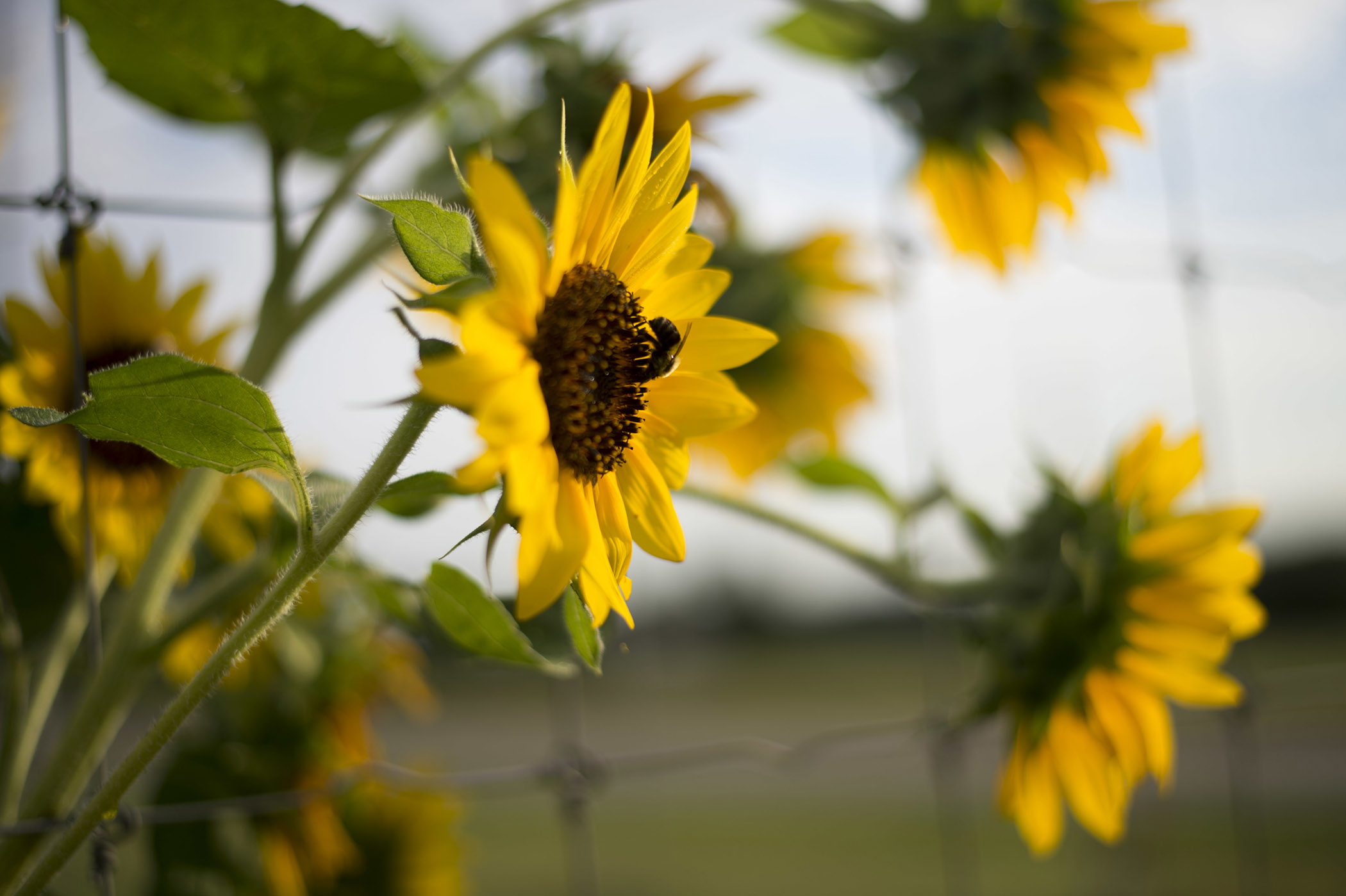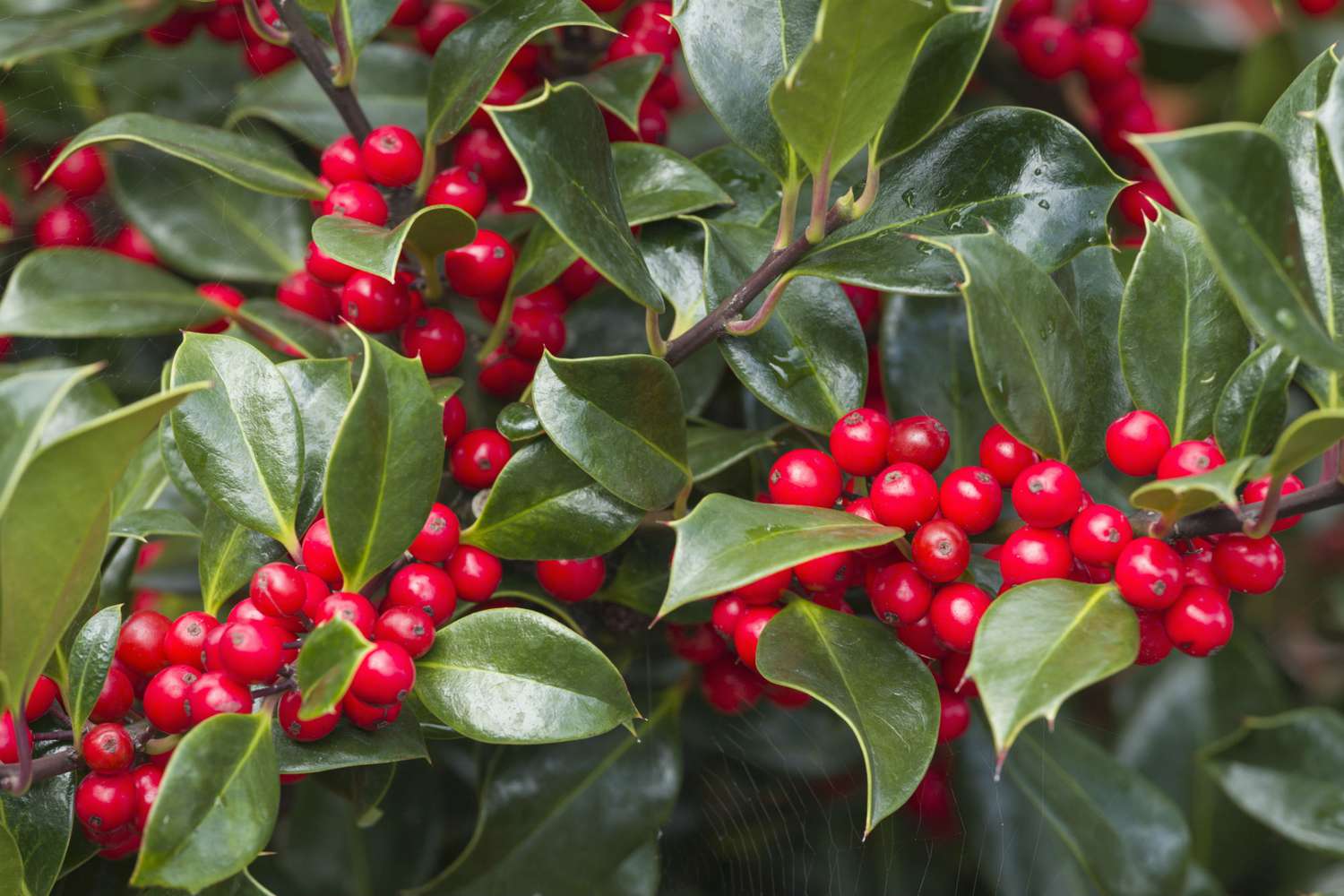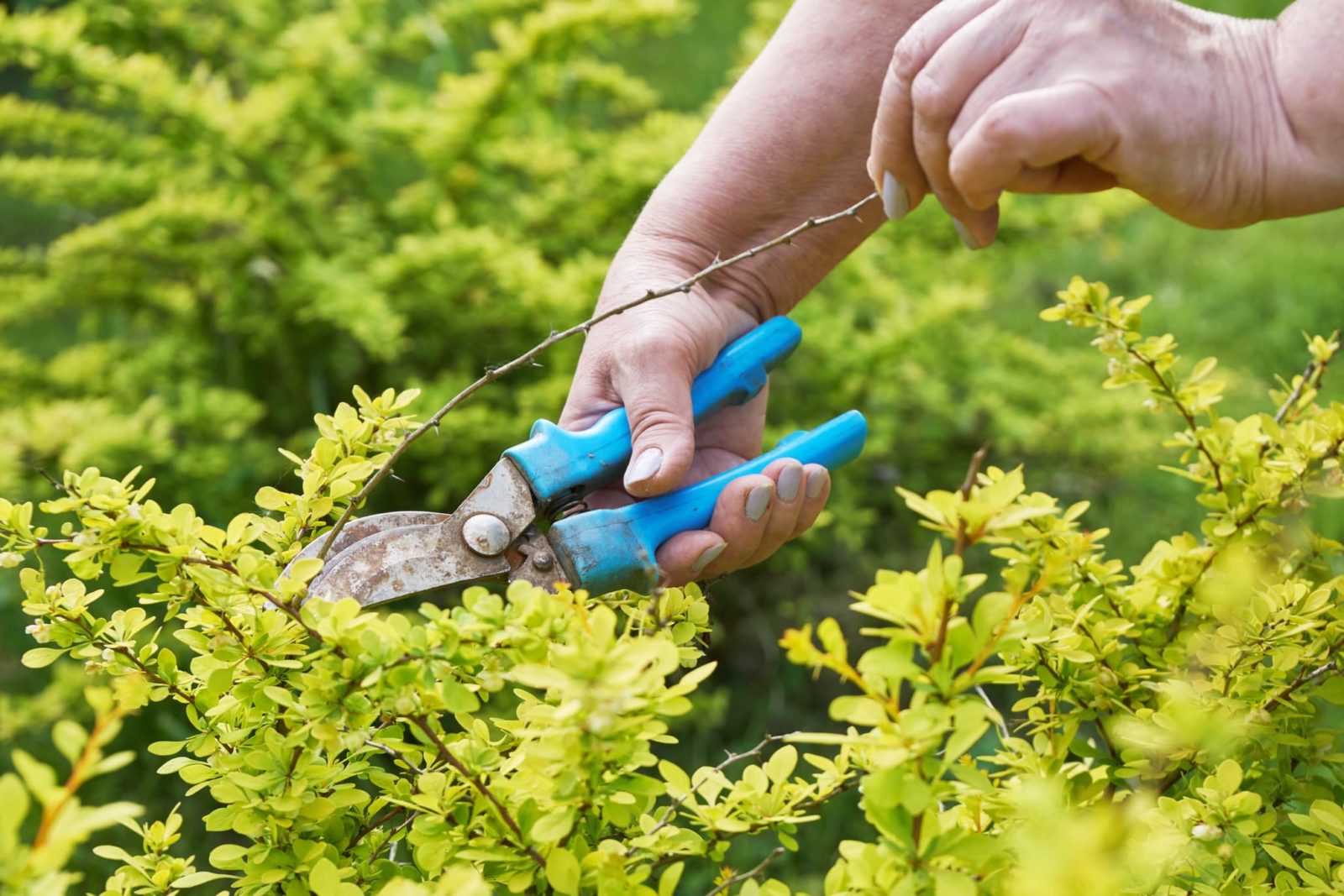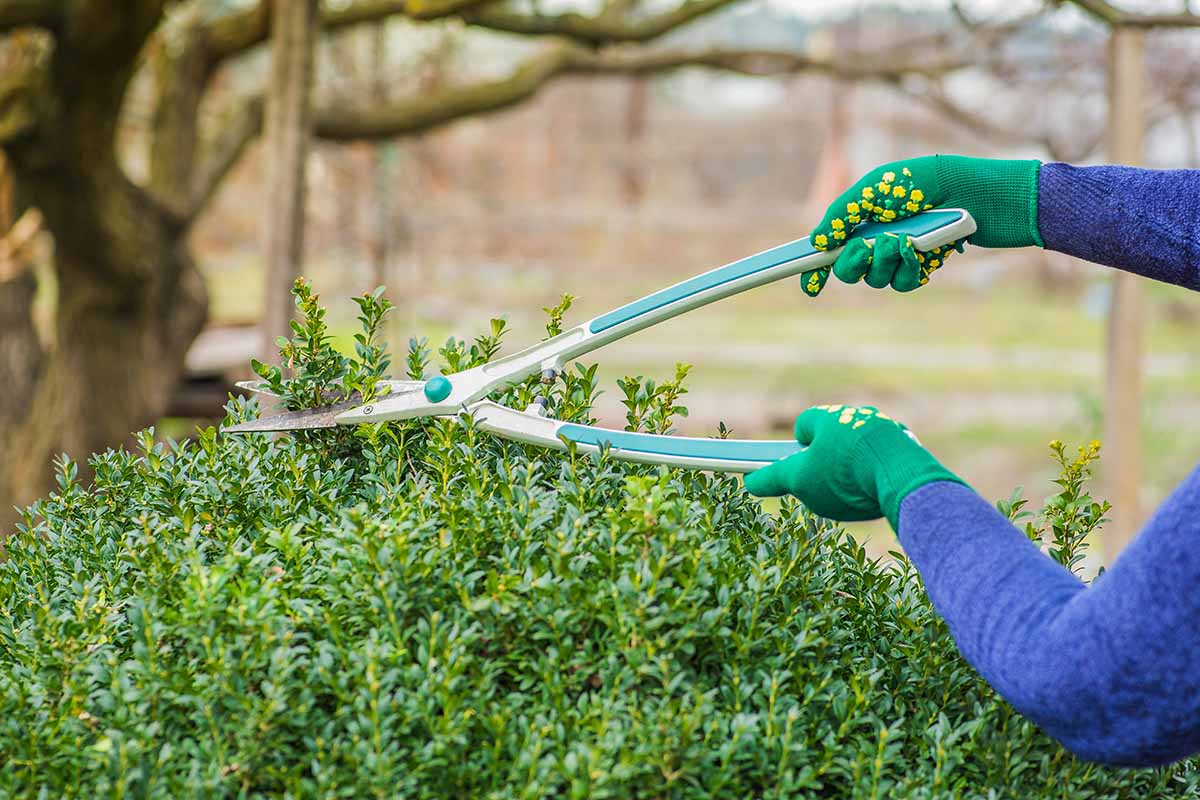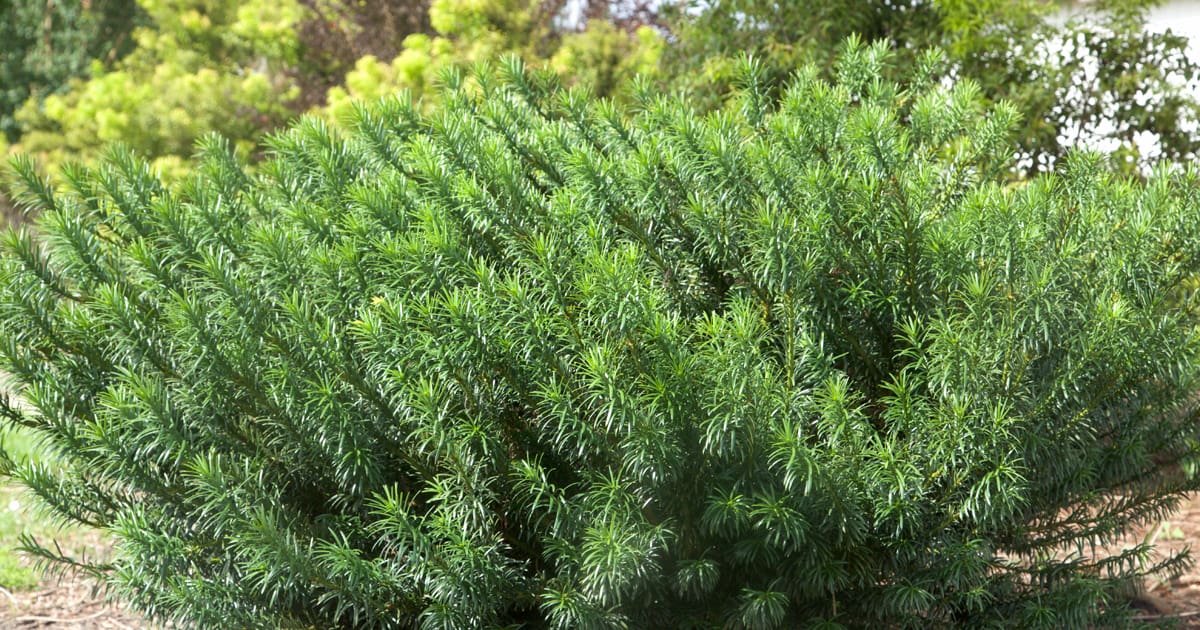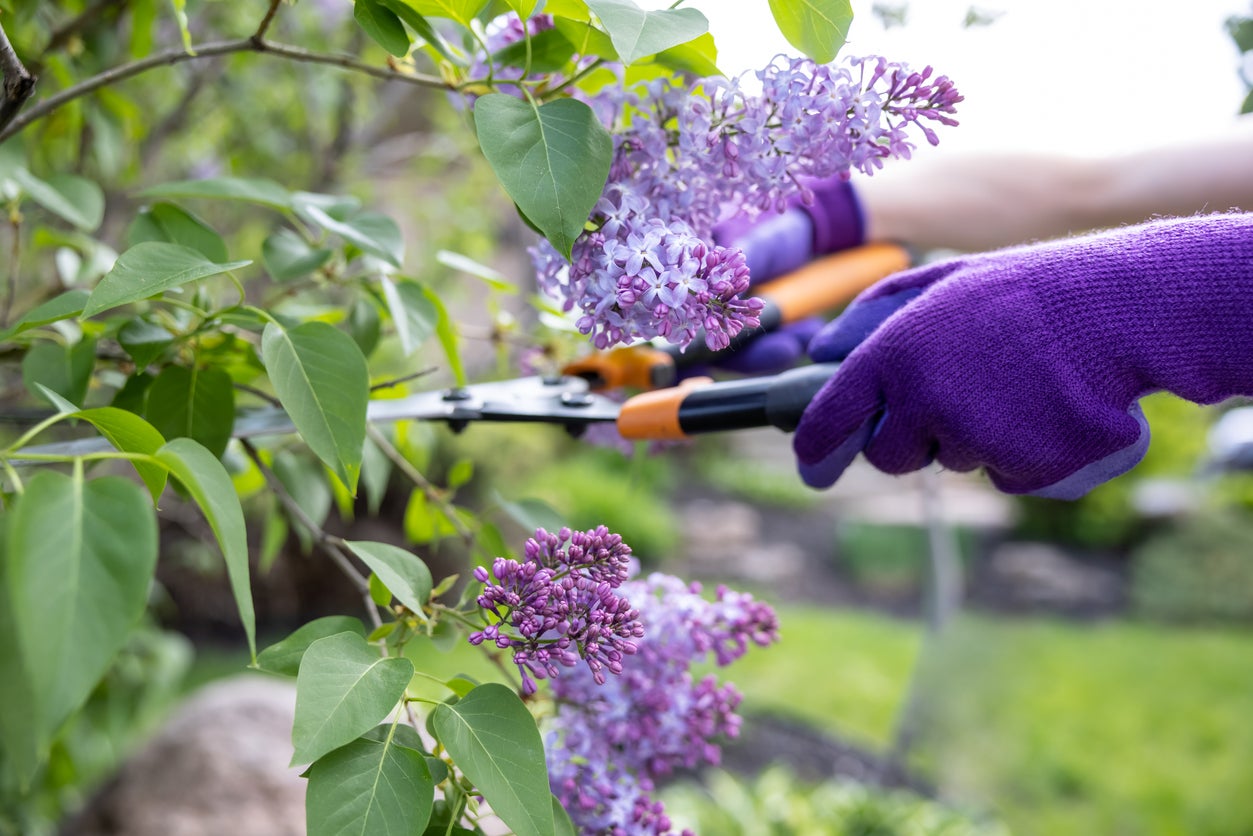Home>Gardening Techniques>Plant Care>When Should I Prune Potentilla Shrubs
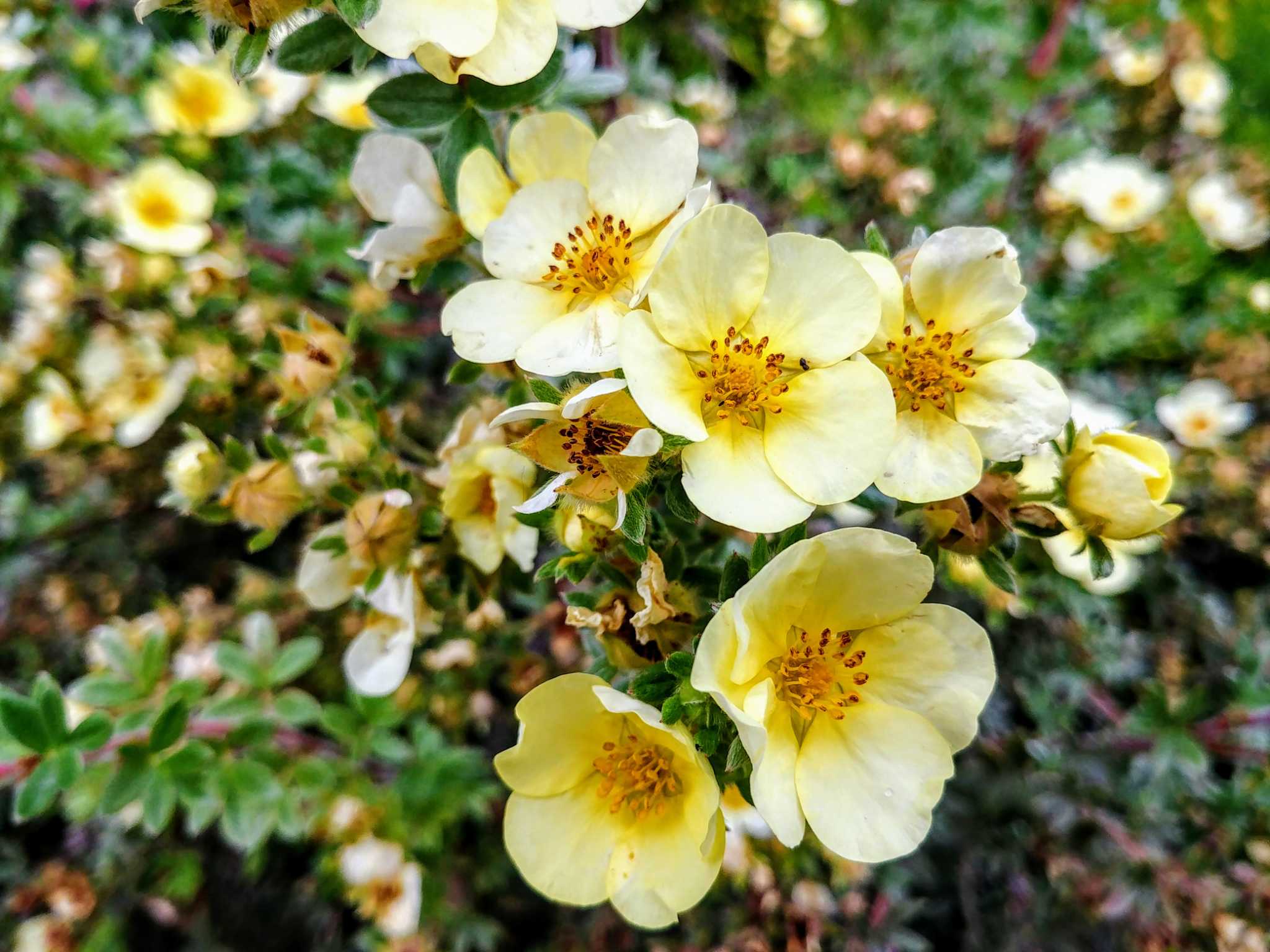

Plant Care
When Should I Prune Potentilla Shrubs
Modified: February 9, 2024
Learn the best time for pruning potentilla shrubs and discover essential plant care tips with our comprehensive guide. Enhance the health and beauty of your potentilla shrubs with expert advice!
(Many of the links in this article redirect to a specific reviewed product. Your purchase of these products through affiliate links helps to generate commission for Chicagolandgardening.com, at no extra cost. Learn more)
Table of Contents
- Introduction
- Understanding Potentilla Shrubs
- Benefits of Pruning Potentilla Shrubs
- Signs that Pruning is Required
- Best Time for Pruning Potentilla Shrubs
- Step-by-Step Guide for Pruning Potentilla Shrubs
- Tools and Equipment Needed for Pruning
- Tips for Pruning Potentilla Shrubs
- Common Mistakes to Avoid During Pruning
- Conclusion
Introduction
Pruning is an essential aspect of plant care that helps maintain the health, shape, and overall appearance of various shrubs. Potentilla shrubs, with their vibrant blooms and graceful foliage, are no exception. Trimming these shrubs at the right time can promote vigorous growth, improve flowering, and prevent disease and pests.
Whether you are a novice gardener or have been tending to your garden for years, knowing when and how to prune your potentilla shrubs is crucial. In this article, we will delve into the art of pruning potentilla shrubs and provide you with a comprehensive guide to achieve the best results.
Understanding the unique characteristics of potentilla shrubs is essential before embarking on any pruning endeavor. These hardy shrubs, known scientifically as Potentilla fruticosa, are native to many parts of Europe and Asia. They are popular among gardeners for their stunning array of colors, including yellow, white, pink, and orange.
Pruning potentilla shrubs offers several benefits. One of the primary advantages is maintaining the desired shape and size of the plant. Regular trimming helps prevent the shrub from growing too large and outgrowing its designated space in your garden. It also helps to enhance the overall aesthetics of your landscape, creating a neat and well-maintained appearance.
Another benefit of pruning potentilla shrubs is the promotion of healthy growth and abundant flowering. By removing old, dead, or diseased branches, you stimulate new growth from the base, resulting in a fuller, lusher shrub. Pruning also encourages the production of more flowers, ensuring a vibrant and colorful display in your garden.
Pruning is not required throughout the year, but there are certain signs that indicate it is time to trim your potentilla shrubs. Keep an eye out for overgrown or unruly branches that may be obstructing pathways or neighboring plants. Additionally, if you notice any signs of disease or pest infestation, pruning can help eliminate affected areas and prevent further spread.
Now that we have established the importance of pruning potentilla shrubs, let’s explore the best time and techniques to carry out this essential task. With a little knowledge and careful attention, you can ensure the health and beauty of your potentilla shrubs for years to come.
Understanding Potentilla Shrubs
Potentilla shrubs, also known as cinquefoil, are a popular choice among gardeners for their beautiful flowers and versatile nature. These deciduous shrubs belong to the Rosaceae family and are native to various regions of Europe, Asia, and North America. With their bright blooms, these shrubs add vibrant colors to gardens and landscapes.
One of the distinguishing features of potentilla shrubs is their small, five-petaled flowers that resemble buttercups. These flowers come in a wide range of colors, including yellow, white, pink, and orange, providing a delightful visual display. The foliage of potentilla shrubs is typically green, with alternate compound leaves composed of multiple leaflets.
Potentilla shrubs are generally low-maintenance plants, making them a popular choice for both experienced gardeners and beginners. They are known for their adaptability to a variety of soil types, including sandy, loamy, and clay soils. These shrubs also have good tolerance to drought conditions, making them suitable for regions with limited rainfall.
In terms of size, potentilla shrubs typically grow to a height and spread of 2 to 4 feet, creating a compact and bushy appearance. However, some cultivars may grow larger, reaching up to 6 feet in height. The growth habit of these shrubs is generally upright, with branches that arch slightly towards the tips.
When it comes to sun exposure, potentilla shrubs thrive in full sun to part shade. They require at least 6 hours of direct sunlight each day to ensure proper growth and abundant flowering. The ideal planting location for these shrubs is an area that receives morning sun and filtered shade in the afternoon.
Another noteworthy characteristic of potentilla shrubs is their ability to attract pollinators such as bees and butterflies. The nectar-rich flowers act as a magnet for these beneficial insects, aiding in the pollination of nearby plants. This makes potentilla shrubs an excellent choice for gardeners looking to create a pollinator-friendly environment.
Overall, potentilla shrubs are easy to grow, versatile, and visually appealing. Whether used as border plants, in garden beds, or as focal points in a landscape, these shrubs bring beauty and charm to any garden setting.
Benefits of Pruning Potentilla Shrubs
Pruning is an essential practice when it comes to maintaining the health and appearance of potentilla shrubs. Regular trimming offers a myriad of benefits for these beautiful shrubs, ensuring their longevity and promoting optimal growth and flowering. Let’s explore some of the key advantages of pruning potentilla shrubs:
- Promotes vigorous growth: Pruning stimulates new growth in potentilla shrubs by removing old, dead, or diseased branches. This encourages the shrub to produce fresh, healthy shoots from the base, resulting in a fuller and more vibrant plant.
- Enhances flower production: By selectively pruning potentilla shrubs, gardeners can maximize flower production. Trimming back the branches stimulates the growth of new flower buds, leading to a more abundant and colorful display of blooms.
- Improves overall health: Pruning helps improve air circulation and sunlight penetration within the shrub’s canopy. This reduces the risk of fungal diseases and discourages the development of pests, ensuring the overall health and vitality of the potentilla shrub.
- Maintains desired shape and size: Potentilla shrubs, if left unpruned, can grow unruly and become too large for their designated space. Regular trimming allows gardeners to control the size and shape of the shrub, keeping it well-groomed and fitting harmoniously within the landscape.
- Controls pests and diseases: Pruning helps identify and eliminate branches that may be affected by pests or diseases. By promptly removing these infected areas, you can prevent the spread of issues and maintain a healthier shrub.
- Encourages rejuvenation: Over time, potentilla shrubs may become woody and less productive. Pruning plays a crucial role in rejuvenating these shrubs by renewing their growth and rejuvenating their appearance.
With these numerous benefits in mind, it becomes evident that pruning is an essential practice for the health and beauty of potentilla shrubs. Regular attention and care through proper pruning techniques will ensure that your potentilla shrubs thrive and provide you with years of enjoyment.
Signs that Pruning is Required
Knowing when to prune your potentilla shrubs is just as important as understanding how to do it. Keeping an eye out for certain signs will help you determine when pruning is necessary for the health and aesthetics of your shrubs. Here are some common signs that indicate pruning is required:
- Overgrown branches: If you notice that the branches of your potentilla shrubs are spreading out too much, obstructing pathways, or encroaching on nearby plants, it is a clear sign that pruning is necessary. Trimming back the overgrown branches will help maintain the desired shape and prevent overcrowding.
- Dead or diseased branches: Any branches that appear dead, dry, or diseased should be pruned immediately. Deadwood not only affects the overall health of the shrub but also provides a breeding ground for pests and diseases. Removing these branches will prevent further damage and promote healthier growth.
- Limited flowering: If your potentilla shrubs are not producing as many flowers as they used to, pruning can help. Lack of flowering may be due to the presence of old, unproductive wood. Trimming these branches will stimulate new growth and encourage more abundant flowering in the following seasons.
- Crossing or rubbing branches: When branches of a potentilla shrub start crossing or rubbing against each other, it can cause damage and hinder healthy growth. Pruning these branches will eliminate the potential for friction and allow the shrub to grow in a more balanced and structured manner.
- Renewal pruning: Over time, potentilla shrubs may become woody and produce fewer flowers. If you notice a decline in vigor or overall decline in appearance, it might be time for renewal pruning. This involves cutting back the shrub to encourage fresh growth and rejuvenate its overall health and appearance.
Regularly inspecting your potentilla shrubs for these signs will help you determine when pruning is necessary. Be sure to take action promptly to prevent any potential issues from worsening. Pruning at the right time and with proper techniques will ensure that your potentilla shrubs remain healthy, attractive, and flourishing.
Best Time for Pruning Potentilla Shrubs
Pruning potentilla shrubs at the right time is crucial to ensure successful growth and abundant flowering. Knowing the optimal timing for pruning will help you achieve the best results. The ideal time for pruning potentilla shrubs is determined by their flowering patterns and the specific pruning techniques applied:
- Spring Pruning: The best time to prune potentilla shrubs is in early spring, before new growth begins. This allows for the removal of any dead, damaged, or diseased branches that may have occurred during the winter months. Spring pruning also encourages renewed growth and enhances the shrub’s overall appearance.
- After Flowering: Another opportune time for pruning potentilla shrubs is immediately after they finish flowering. This is typically in late spring or early summer, depending on the specific cultivar and climate. Pruning after flowering allows you to remove any spent flowers and encourages the shrub to produce fresh growth and potentially even a second round of blooming.
- Summer Pruning: While not typically recommended, light pruning in summer can be done to shape or control unruly growth. Avoid heavy pruning during this time as it may disrupt the shrub’s ability to recover and may reduce the number of flowers produced in the following season.
- Avoid Late Fall Pruning: It is important to avoid pruning potentilla shrubs in late fall, as this can stimulate new growth that may not harden off before winter. Newly emerged growth can be more susceptible to frost damage, potentially harming the overall health of the shrub.
Understanding the flowering patterns and growth habits of your specific potentilla shrub cultivar will help you determine the best time for pruning. However, as a general rule, pruning in early spring or after flowering is recommended for promoting optimal growth, maintaining shape, and encouraging abundant blooming.
Remember to use proper pruning techniques, such as making clean cuts just above a bud or lateral branch junction. This will help promote healthy regrowth and minimize the risk of disease or pest infestation. When in doubt, it is always a good idea to consult with a local gardening expert or reference reliable pruning guides specific to your area.
By following these guidelines and pruning at the appropriate times, you can ensure that your potentilla shrubs remain healthy, attractive, and bursting with colorful blooms year after year.
Step-by-Step Guide for Pruning Potentilla Shrubs
Pruning your potentilla shrubs can seem daunting, but with the right techniques, it can be a straightforward and rewarding process. Follow these step-by-step instructions to prune your potentilla shrubs effectively:
- Gather the necessary tools: Before you begin pruning, gather the essential tools, including sharp bypass pruners, loppers, and protective gloves. Ensure that your tools are clean and properly sharpened for precise cuts.
- Assess the shrub: Take a moment to assess your potentilla shrub before beginning the pruning process. Identify any dead, crossed, or diseased branches that need to be removed. Also, determine the shape and size you want to achieve with your pruning.
- Start with deadwood removal: Begin by removing any dead, dry, or diseased branches. Cut these branches back to their base or to the point where healthy wood meets the damaged area. Remember to make clean cuts just above a bud or lateral branch junction.
- Thin out crowded branches: Look for branches that are crossing or rubbing against each other. These branches can cause damage and hinder healthy growth. Carefully remove any overcrowded branches, prioritizing those that are causing friction.
- Shape the shrub: If your potentilla shrub needs shaping, trim back branches to achieve the desired form. Make cuts just above a bud or lateral branch junction, angling the cut away from the bud to encourage outward growth. Step back occasionally to check the overall symmetry of the shrub and adjust as needed.
- Manage size: If your potentilla shrub has grown larger than desired, selectively prune branches to reduce the size. Focus on removing long, vigorous branches to help maintain the shrub’s compact shape. Remember to avoid removing more than one-third of the shrub’s total growth in a single pruning session.
- Clean and sanitize: After pruning, clean your tools with a disinfectant solution to prevent the spread of diseases. This is especially important if you have pruned any diseased branches. Proper tool maintenance ensures their longevity and reduces the risk of infecting healthy plants.
- Dispose of pruned material: Collect and dispose of the pruned branches appropriately. You can either compost the small, non-diseased trimmings or dispose of them in yard waste bins. If you have removed any branches affected by diseases, it is best to discard them entirely.
By following these step-by-step guidelines, you can confidently prune your potentilla shrubs, promoting healthy growth, improved flowering, and an overall well-maintained appearance. Remember to take your time, make clean cuts, and regularly reassess the shrub’s shape and size as you proceed. With practice and a little patience, your pruning skills will improve, ensuring the long-term health and beauty of your potentilla shrubs.
Tools and Equipment Needed for Pruning
Proper tools and equipment are essential for successful and effective pruning of your potentilla shrubs. Having the right tools at hand will make the job easier and help you achieve clean, precise cuts. Here are the essential tools and equipment you’ll need for pruning potentilla shrubs:
- Sharp bypass pruners: Bypass pruners are crucial for making clean cuts on small branches and stems. Look for pruners with a sharp, curved blade that bypasses a thicker, non-cutting blade. Ensure that the pruners are well-maintained and properly sharpened for optimal cutting efficiency.
- Loppers: Loppers are necessary for pruning thicker branches that are too large for bypass pruners. Look for loppers with long handles that provide leverage and a sharp cutting mechanism. Choose loppers with a ratcheting or gear mechanism for easier cutting and reduced strain on your hands and arms.
- Protective gloves: Invest in a pair of sturdy, protective gloves to shield your hands from thorns, sharp branches, and other potential hazards. Choose gloves made from thick, durable materials that provide both comfort and protection during pruning.
- Pruning saw (optional): Depending on the size of your potentilla shrubs and the pruning requirements, you may need a pruning saw. A pruning saw can handle thicker branches that cannot be easily cut with pruners or loppers. Choose a pruning saw with a sharp, curved blade for efficient cutting.
- Pruning shears (optional): Pruning shears, also known as hand shears or hedge shears, are useful for shaping and maintaining the overall appearance of your potentilla shrubs. They are particularly handy for creating clean, straight lines and trimming small, delicate foliage.
- Disinfectant solution: To prevent the spread of diseases and pathogens, keep a disinfectant solution on hand. After each pruning session, dip the blades of your tools into the solution to sanitize them. This practice helps minimize the risk of infecting healthy branches and plants.
It is essential to invest in high-quality tools that are appropriate for the size and needs of your potentilla shrubs. Well-maintained and sharp tools ensure clean cuts, minimize damage to the shrub, and make the pruning process more efficient. Don’t forget to wear protective gloves to protect your hands during pruning.
By having the right tools and equipment readily available, you can approach pruning your potentilla shrubs with confidence, knowing that you have everything you need to carry out the task effectively.
Tips for Pruning Potentilla Shrubs
Pruning potentilla shrubs requires careful attention to detail and proper techniques to achieve desirable results. Here are some tips to help you make the most out of your pruning endeavors:
- Prune in the appropriate season: Prune your potentilla shrubs in early spring or after they finish flowering to promote healthy growth and abundant blooming. Avoid late fall pruning, as it may stimulate new growth that is susceptible to frost damage.
- Start with deadwood removal: Begin by removing any dead, dry, or diseased branches. This will enhance the overall health of the shrub and prevent the spread of diseases or pests.
- Use clean and sharp tools: Ensure that your pruning tools are clean and properly sharpened before starting. Clean cuts with sharp tools promote faster healing and minimize the risk of disease transmission.
- Make clean cuts: When making cuts, angle them away from buds or lateral branch junctions. This will discourage water accumulation and promote outward growth, providing a more balanced and attractive shape.
- Prune selectively: Avoid excessive pruning, especially in a single session. Removing more than one-third of the shrub’s growth can stress the plant. Prune selectively to maintain a natural and healthy shape, allowing the shrub to recover properly.
- Avoid pruning during hot, dry periods: Pruning during extreme heat or drought conditions can hinder the shrub’s ability to recover. Aim to prune on cool, cloudy days or during periods of moderate weather to reduce stress on the shrub.
- Step back and reassess: Periodically step back and assess the shape and symmetry of the shrub as you prune. This will help you achieve a balanced and visually appealing appearance.
- Remove suckers: Potentilla shrubs can sometimes produce suckers, which are shoots that sprout from the base of the plant. Remove these suckers promptly to prevent them from competing with the main shrub and sapping its energy.
- Dispose of pruned material properly: Collect and dispose of pruned branches appropriately. If the trimmings are free from diseases, consider composting them to enrich your garden soil. If diseased or infested, dispose of them in yard waste bins or through other appropriate means.
- Seek guidance when needed: If you are uncertain about pruning techniques or specific challenges with your potentilla shrubs, don’t hesitate to consult with a local gardening expert or reference reliable pruning guides. Their expertise can provide valuable insights and ensure successful pruning.
By following these tips, you can approach the task of pruning your potentilla shrubs with confidence and achieve the desired results. Remember, each shrub is unique, so it’s important to understand its specific needs and growth habits. With proper care and attention, your potentilla shrubs will thrive, rewarding you with healthy growth, abundant blooms, and a beautiful landscape.
Common Mistakes to Avoid During Pruning
Pruning potentilla shrubs is a delicate task that requires precision and proper techniques. To ensure the health and long-term vitality of your shrubs, it is important to avoid common mistakes that can hinder their growth or cause damage. Here are some common mistakes to avoid during pruning:
- Pruning at the wrong time: Pruning at the wrong time can disrupt the shrub’s natural growth cycle and result in reduced flowering or potential damage. Make sure to prune your potentilla shrubs during the appropriate season, either in early spring or after they finish flowering.
- Excessive pruning: Removing too much foliage in a single pruning session can stress the shrub and lead to slow recovery or even decline. Avoid excessive pruning, as it may compromise the overall health and appearance of your potentilla shrubs. Stick to selective pruning and remove no more than one-third of the shrub’s total growth.
- Pruning with dull or dirty tools: Using dull or dirty pruning tools can result in messy, ragged cuts that are more likely to invite diseases and pests. Keep your tools clean, well-maintained, and properly sharpened to ensure clean cuts and minimize the risk of infections.
- Incorrect pruning cuts: Making improper cuts can hinder the shrub’s healing process and increase the risk of disease. Always make clean cuts just above a bud or lateral branch junction, angling the cut away from the bud to encourage outward growth.
- Overlooking diseased branches: Neglecting to remove diseased or infested branches can result in the spread of diseases throughout the shrub. Inspect your potentilla shrubs carefully and promptly remove any signs of disease or pest infestation during pruning to protect the health of the plant.
- Ignoring the shrub’s natural shape: Pruning without consideration for the shrub’s natural form can result in an unnatural appearance. Avoid removing too many branches or altering the shrub’s shape to maintain its inherent beauty and structural integrity.
- Pruning during extreme weather conditions: Pruning during extremely hot, cold, or dry conditions can place additional stress on the shrub. Aim to prune on cool, cloudy days or during periods of moderate weather to allow for proper recovery.
- Improper disposal of pruned material: Failing to properly dispose of pruned branches can lead to the spread of diseases or pests. Discard any pruned material that is diseased or infested, and consider composting the healthy trimmings to enrich your garden soil.
- Skipping proper sanitation: Neglecting to sanitize your pruning tools can contribute to the spread of diseases among your potentilla shrubs. After each pruning session, dip your tools in a disinfectant solution to minimize the risk of contamination.
- Not seeking guidance when needed: If you are uncertain about how to properly prune your potentilla shrubs or encounter specific challenges, seek guidance from a local gardening expert or reputable pruning resources. Their expertise can help you avoid mistakes and ensure successful pruning.
By avoiding these common mistakes and practicing proper pruning techniques, you can maintain the health, beauty, and vigor of your potentilla shrubs. Pruning, when done correctly, will promote healthy growth, abundant flowering, and a pleasing aesthetic in your garden.
Conclusion
Pruning potentilla shrubs is an essential practice for maintaining their health, shape, and overall appearance. By understanding the unique characteristics of potentilla shrubs and following proper pruning techniques, you can ensure their longevity and promote optimal growth and flowering.
In this comprehensive guide, we have explored the importance of pruning, the best time to prune, and step-by-step instructions on how to prune your potentilla shrubs. We have also discussed the tools and equipment needed for pruning and provided valuable tips to help you avoid common mistakes.
Remember to prune your potentilla shrubs in early spring or after they finish flowering, depending on the specific needs of your shrub. Use clean and sharp tools, make clean cuts just above a bud or lateral branch junction, and remove dead, damaged, or diseased branches. Avoid excessive pruning and consider the natural form of the shrub when shaping.
Your pruning efforts will yield several benefits, including promoting vigorous growth, enhancing flower production, improving overall health, maintaining the desired shape and size, and controlling pests and diseases. By following the proper techniques and guidelines, you will enjoy beautiful, healthy, and thriving potentilla shrubs in your garden for years to come.
If you have any uncertainties or encounter specific challenges during the pruning process, do not hesitate to seek guidance from a local gardening expert or consult reputable pruning resources. With patience, practice, and a little knowledge, you can master the art of pruning potentilla shrubs and create a stunning and well-maintained garden.
